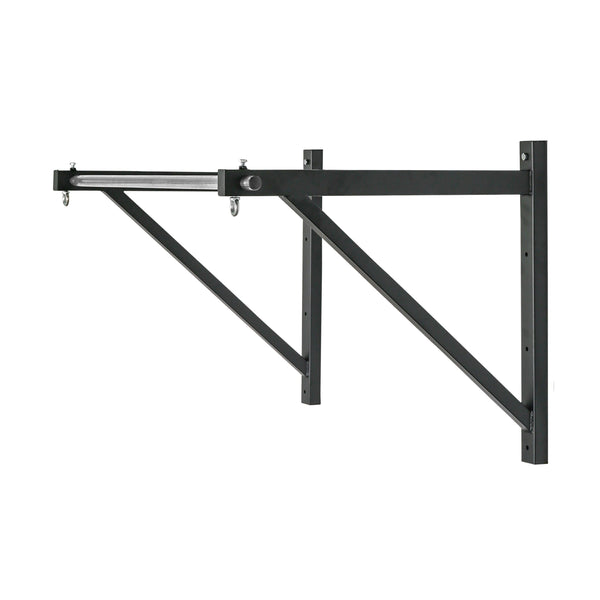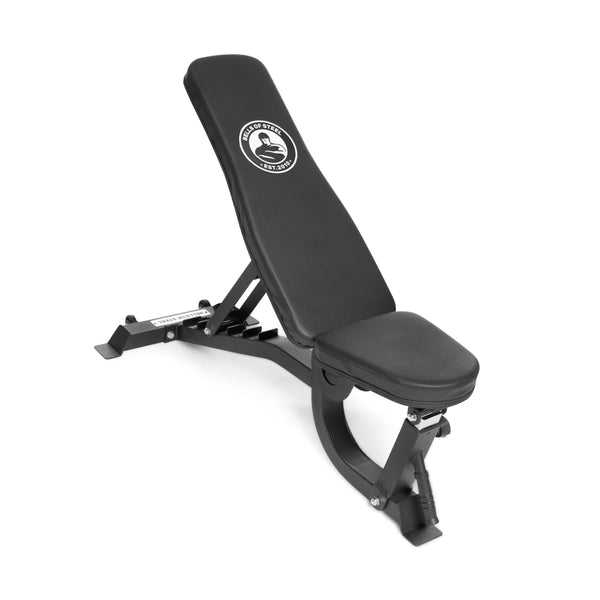Here’s a terrible feeling: spending your hard-earned money, time, and effort to build the home gym of your dreams but being unable to use it due to an injury you could have avoided. Unfortunately, I’ve seen this play out with many home gym enthusiasts who took their equipment and lifting seriously but neglected their mobility and soft-tissue health. I assure you that you’ll be kicking yourself if you can’t work out due to your joints, muscles, and tendons feeling like a hot mess from neglect.
You’ve made a substantial effort toward investing in your equipment, strength, and overall health. Without some effort toward keeping your body moving properly, your training longevity may suffer, and your equipment won’t get much use.
So, let’s change that! In this article, I’ll walk you through the most prominent benefits you’ll experience simply by incorporating fundamental mobility and movement principles into your home gym training. Let’s get to it!
As I dive into the meat and potatoes of this article, be aware that I’m covering the general benefits of optimizing your body’s movement, not necessarily how to achieve these benefits. The world of mobility training can go to some rather deep depths, and like strength training, an individualized approach works best. Nonetheless, here are a few basic starting points for incorporating mobility work into your home training sessions:
- Find the type of mobility work or training that you enjoy the most. Whether it’s foam rolling, traditional stretching, flow patterns, yoga, etc., the best type of mobility exercises to perform are the types you’ll actually do.
- You can perform dedicated stand-alone mobility sessions separate from your regular workouts or incorporate mobility exercises and techniques into your training sessions (often called “snacking” on your mobility), either between sets or after your workout, etc.
- Mobility work doesn’t have to be aggressive. The body often responds better to mobility work utilizing high frequency with low intensity than low frequency but high-intensity work. Find what works best for you, but this ultimately comes down to consistency.
Alright, let’s talk mobility benefits!
Finding ways to maximize the versatility of your equipment to get the most out of your mobility training will make you a better lifter in multiple ways. In this photo, I’m performing a hip capsule stretch using a resistance band.
Let’s start with a cluster of mobility benefits every lifter craves: better workouts, improved technical proficiency with their lifts, and more strength. That’s three distinct benefits, but each adds to a common outcome: better training results. Not a bad grouping of benefits in exchange for a bit of time spent working on your mobility, eh? Let’s break this down a bit more.
When your body moves how it is intended to move, it becomes easier for you to focus on the task (i.e., moving the weight and challenging yourself) without being distracted by that nagging pain in your knee or that aching discomfort in your lower back. If you’re going to challenge yourself, your mind needs to be focused on your task and nothing else. Distractions can mess with your lifts, which messes with your training results. And, of course, workouts are more enjoyable when pain arising from musculoskeletal dysfunction (dysfunction arising from muscles, tendons, bones, or joints) isn’t present.
Optimizing your technique should always be a top priority. Doing so keeps you safe and increases the efficiency of your lift, allowing you to lift more weight. And wouldn’t you know it, the pursuit of this technique mastery becomes a much more manageable task when your body can move how it should. When you try to improve your mobility, you will not only prevent future training-based pain or injuries but also set new personal records with how much weight you can push, pull, and carry.
Take the classic barbell squat as an example: a mildly painful hip might cause you to slightly (often subconsciously) shift your body weight off the sore hip. Now, your other hip endures more of the barbell’s load, which can lead to additional issues in this compensating hip. At best, it will compromise your overall maximal abilities with the squat. At worst, it will lead to pain or injury.
As a second example, a stiff thoracic spine (the portion of your spine in your middle and upper-back region) will alter your overhead press technique and lead to some nasty compensation in your lower back. If your upper back is stiff, getting your arms above your head is immensely challenging. You’ll arch your lower back like crazy to make this happen, leading to nasty lower back pain and a substantially reduced overhead press.
Mobility work doesn’t have to consist of the traditional “lay on a mat and stretch” approach that many envision when considering how to improve their mobility. If you spend your hard-earned dollars on beautiful home gym equipment, you want to squeeze as much value out of that equipment as possible, which goes far beyond strength training.
Learn how to perform multiple strength training exercises with each piece of equipment you have. The same approach should be taken when performing mobility work with that equipment.
Using a barbell sleeve for self-massage of your legs and calves is a technique that any home gym owner with a barbell can employ. Just be aware that it can be rather intense!
Here are a few quick examples:- If you have a pull-up bar, performing a few dead hangs at the end of your workout can help improve mobility in your shoulders and thoracic spine and stretch your entire spine.
- If you have an Olympic barbell or kettlebell, you can use it to perform soft tissue mobilization (muscle massage) on any tight or sore spots in your legs.
- If you have a power rack or squat stand, you can perform numerous mobility exercises and stretches by hooking bands or tubing around their frame or posts.
- If you have a workout bench, you can perform numerous stretches and mobility exercises, such as thoracic spine extensions & hip flexor stretches.
The bottom line is that strength training equipment (which you’ve worked hard to purchase) can be used for much more than strengthening your body; you can also use it to improve your movement, which will give you more ways to use your home gym setup.
Performing mobility exercises using your home gym equipment can be done either in a standalone session or in between exercises during your strength training sessions.
Most lifters I know who have built up their home gyms take immense care of their equipment; they respect it, look after it, and ensure it stays in proper working order. Doesn’t it seem kind of silly to not take that approach with your body? The pursuit of strength and the improvement of your overall well-being is a lifelong endeavor. As with nearly any worthwhile pursuit, it takes serious commitment.
Committing to this steady path of self-improvement requires different investments, with one of those investments being your equipment. You’ve swapped your hard-earned dollars for the promise of a stronger and better-functioning body so long as you put in the work. But that work can’t be performed, and your equipment can’t be put to use if you’re writhing in pain every time you try to work out.
The effects of not prioritizing your mobility may start subtly; you need to forego the occasional workout to have an extra few days to let that sore back heal up, which isn’t a terrible loss. But next thing you know, you’re down to only working out three times per week instead of your usual four or five due to a sore shoulder, or you’re down to only twice per week because your lower back can’t tolerate more than a few gentle training sessions each week.
The point is that you’ve invested in your equipment. Now it’s time to further invest in your body by investing in your training longevity. You take your money seriously. You take your equipment and home gym seriously. You take your strength training seriously. But if you’re not taking your mobility seriously, you may be setting yourself up for lousy, pain-riddled training sessions and — at worst — the inability to use your equipment for your home workouts due to injury. So, invest time into your mobility work. Doing so will provide serious dividends that keep your training effective, pain-free, and enjoyable.
Disclaimer: None of this is medical advice and is for informational purposes only; please seek an assessment from a qualified healthcare professional.
This is a guest post by Jim Wittstrom. Jim is a physiotherapist and strength & conditioning specialist currently practicing in Calgary, Alberta, Canada. His passion is to help others overcome their physical pain and come back stronger than before. For more great info, you can find him on Strength Resurgence.



